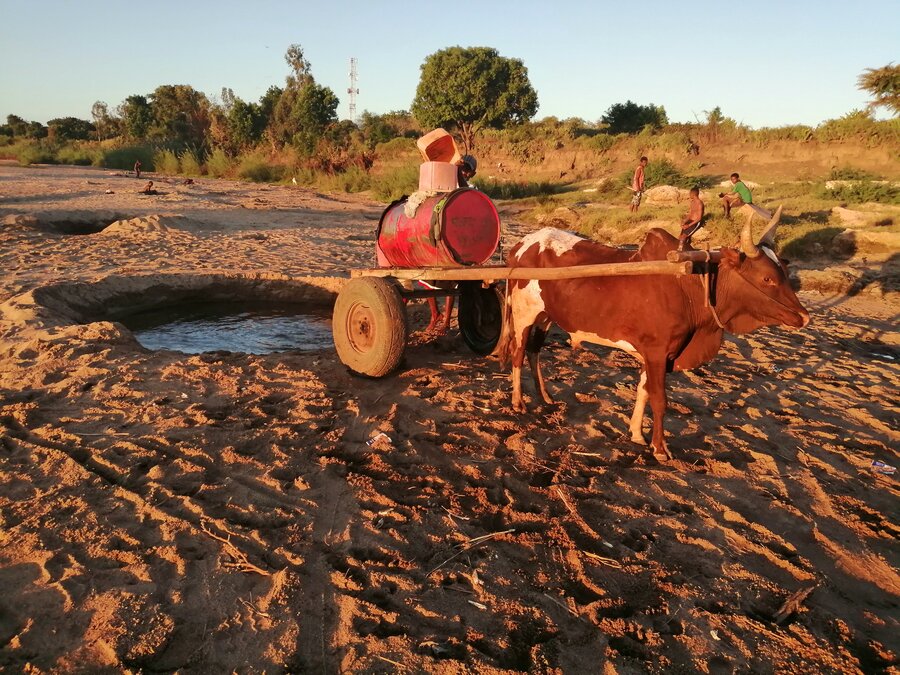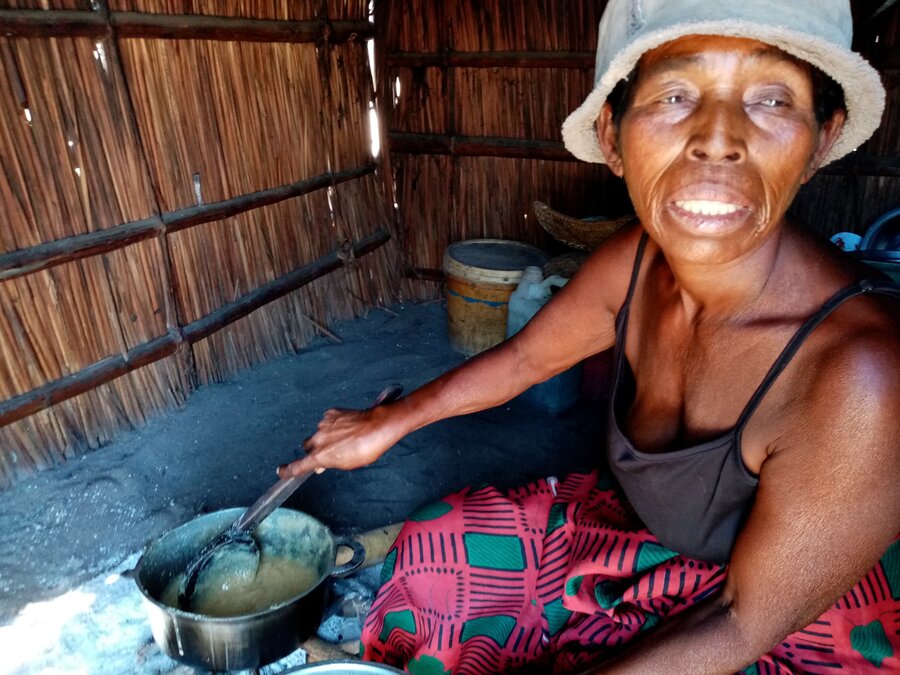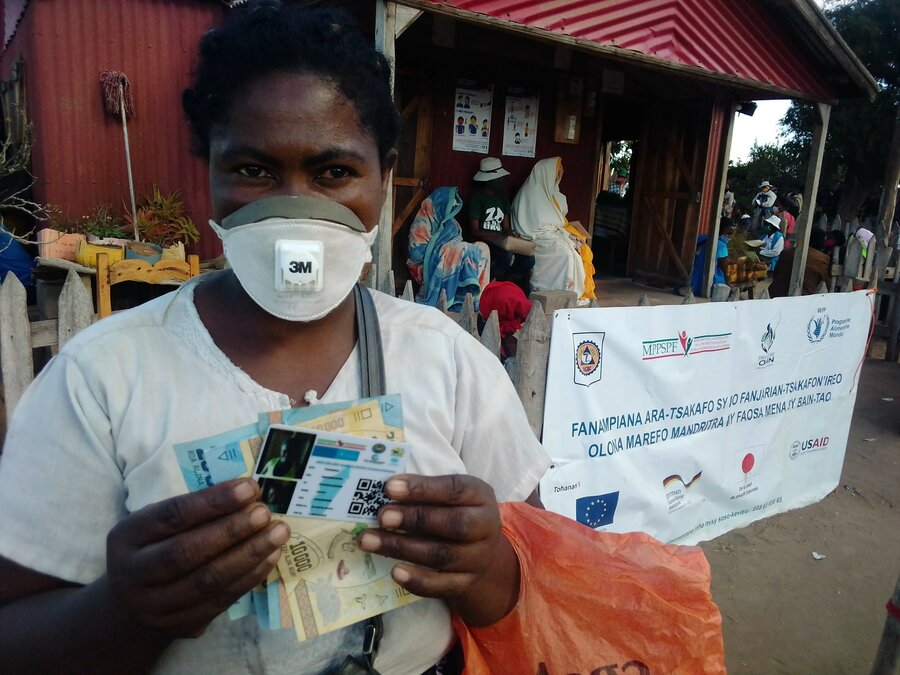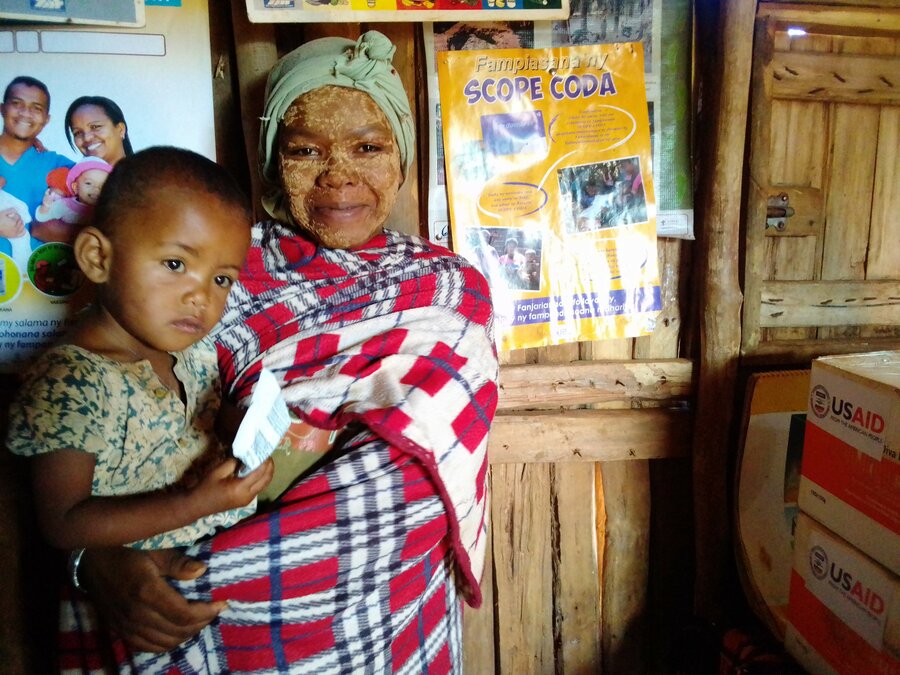How drought is pushing more people into hunger in southern Madagascar

In Ejeda, a village in the Ampanihy district in southern Madagascar, villagers dig holes on the Linta River to find water. It has not rained here since the end of 2019.
‘'People who own carts fetch water in the river and sell it to their neighbours," says Vital Batubilema, Head of the WFP office in Ampanihy. "The further the neighbours live from the river, the more the price of water increases.''
In the southern region of Madagascar, recurrent drought has had a devastating impact, wiping out harvests and hampering people's access to food. An estimated 1.6 million people in the southern part of the island have been food insecure since 2016.
The lean seasons — the periods between two harvests when families' food stocks are low, generally between October and March — have lasted longer in recent years. As there is no harvest during these times, people rely on the consumption of substitute foods such as cactus fruit.

This is where Vao lives with her children. She usually makes a living by occasionally working for the landowners in her village. ‘'It allows me to earn 2,000 to 3,000 Ariary (52 to 78 US cents) to buy rice. Otherwise, we'll settle for a few pieces of spoiled manioc for the day," she says. It is spoiled after many hours on the road being transported by trucks.
This past lean season, from December 2019 to May 2020, Vao received emergency food assistance from WFP, which enabled her to provide food to her family.

In areas where local markets are supplied and functioning, WFP has delivered cash transfers to vulnerable households. Beneficiaries like Haova received 70,000 Ariary (US$18) per month, which allowed them to buy the food they need.
"I live with my husband and six children. During the dry season, we have a routine. I go out every day to look for small-scale activities such as doing laundry for other families," she says.
Haova's husband looks for carpenting jobs but competition with local shops makes this difficult. "On lucky days, we bring money home and can buy two or three kapok (cans) of rice," she explains. "Otherwise we just go to bed hungry."

The WFP cash is used to buy rice and other food, charcoal and water. "In our area, the price of 20-litre cans of water can reach 500 Ariary," says Haova. "As we are a big family, we needed to buy up to four cans a day, so receiving cash assistance was crucial."
Food assistance is combined with nutritional support for the prevention and treatment of malnutrition.
Esina lives with her parents and two children in the village of Ambanisarika, Ambovombe district. Her parents are farmers, but the harvests are far from enough to sustain the family's food needs. They have manioc leaves for lunch, cooked with lots of water and salt, without any nutritious food.
"When manioc leaves are not available, we eat cactus fruit," Esina explains.
Malnutrition has rapidly soared and Esina's eldest son Haova, aged 23 months, has been sick as a result. "My son always seemed tired and sick," she says. "I took him to the local community nutrition centre because I cannot afford to take him to the Ambovombe hospital. The community worker informed me about a project to treat malnutrition for children."
Her son received nutritional support for the treatment of moderate acute malnutrition. He was given specialized nutritious food and weighed every 15 days by the community worker. Esina also received guidance on cooking and hygiene. Haova's son has significantly improved, gaining weight and energy.

WFP assistance was made possible thanks to the support of the European Civil Protection and Humanitarian Aid Operations (ECHO), Germany, Japan, South Korea, the United Nations Emergency Fund (UN CERF) and the United States Agency for International Development (USAID).
WFP reached 400,000 food insecure and vulnerable people in the southern region of Madagascar until May 2020, with life-saving food and nutritional assistance. However, the situation remains dire.
Of the estimated 1.6 million people who will remain food insecure in the upcoming lean season, 554,000 will be in urgent need of food assistance. It is estimated that nearly 120,000 children will suffer from acute malnutrition.
The COVID-19 pandemic is also worsening the situation as access to food and health services has been disrupted and many people have lost their incomes.


